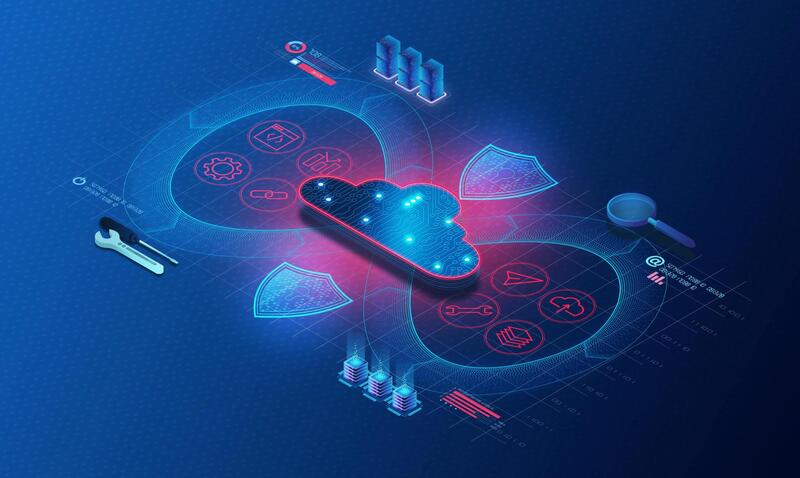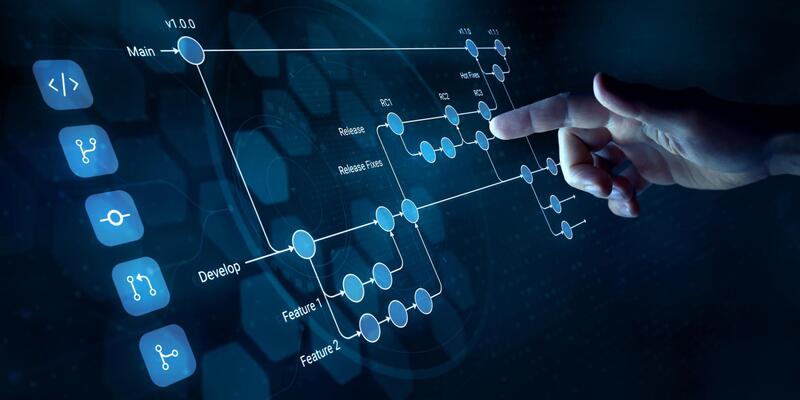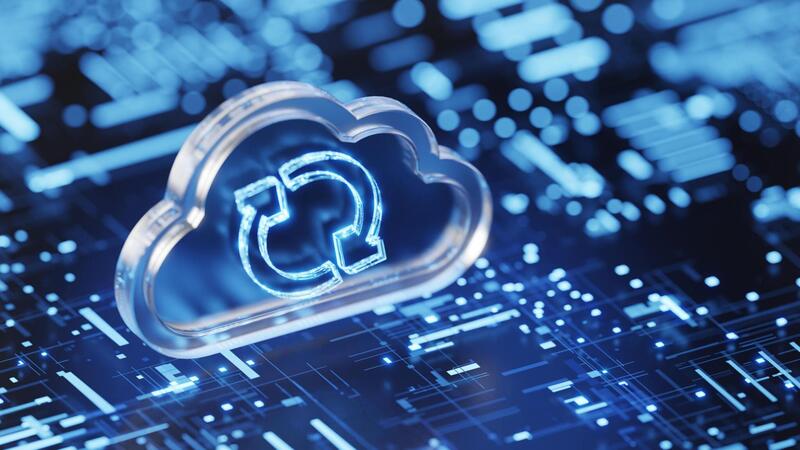The Evolution of DevOps Practices in 2024
DevOps, the cultural and technical movement aimed at unifying software development (Dev) and IT operations (Ops), continues to evolve at a breakneck pace. In 2024, DevOps practices are experiencing significant transformations driven by advancements in technology, shifts in organizational culture, and the ever-increasing demands for faster, more reliable software delivery. Let's explore some of the key trends and changes shaping the DevOps landscape this year.

AI-Driven Automation in DevOps: A Deep Dive
Artificial Intelligence (AI) and Machine Learning (ML) are revolutionizing DevOps practices, driving automation to unprecedented levels. By leveraging these technologies, DevOps teams are achieving higher efficiency, faster delivery, and improved system reliability. In 2024, AI-driven automation is a cornerstone of modern DevOps, transforming various aspects of the development and operations lifecycle. Here, we delve deeper into how AI-driven automation is reshaping DevOps.
1. Automated Code Reviews and Quality Assurance
AI tools are enhancing code quality by automating code reviews and quality assurance processes. These tools analyze codebases for potential issues, such as bugs, vulnerabilities, and code smells, providing developers with actionable feedback.
Example:
GitHub Copilot and DeepCode: These AI-powered tools assist developers by suggesting code improvements and identifying bugs during the coding process. They learn from millions of lines of code and offer context-aware recommendations.
2. Predictive Analytics and Incident Management
Predictive analytics driven by AI can foresee potential system failures and performance degradations before they occur. By analyzing historical data and identifying patterns, AI systems can predict incidents, allowing teams to proactively address issues.
Example:
Moogsoft and Splunk: These platforms use AI to predict system anomalies and failures. They analyze logs, metrics, and events to forecast potential issues and trigger automated responses to mitigate risks.
3. Intelligent CI/CD Pipelines
Continuous Integration and Continuous Deployment (CI/CD) pipelines are becoming smarter with AI. AI-driven CI/CD tools optimize the build, test, and deployment processes, reducing manual intervention and accelerating release cycles.
Example:
Harness and CircleCI: These tools utilize AI to automate complex CI/CD workflows. They intelligently allocate resources, optimize build times, and ensure efficient deployment processes.
4. AI-Powered Monitoring and Observability
AI enhances monitoring and observability by providing deeper insights into system behavior and performance. AI-driven monitoring tools can detect anomalies in real-time, correlate events across distributed systems, and provide root cause analysis.
Example:
Datadog and Dynatrace: These observability platforms use AI to analyze metrics, logs, and traces. They offer predictive insights, automatic anomaly detection, and detailed root cause analysis to help teams maintain system health.
5. Automated Security and Compliance
Security is critical in the DevOps pipeline, and AI is playing a crucial role in automating security and compliance tasks. AI-driven security tools continuously scan code, configurations, and infrastructure for vulnerabilities, ensuring compliance with security standards.
Example:
Aqua Security and Snyk: These platforms use AI to perform continuous security assessments. They detect vulnerabilities in code and container images, enforce security policies, and provide remediation suggestions.
6. Resource Optimization and Cost Management
AI-driven automation helps optimize resource usage and manage costs in cloud environments. By analyzing usage patterns and predicting future demand, AI tools can automatically scale resources, manage load, and optimize cost efficiency.
Example:
Spot.io and CloudHealth by VMware: These tools use AI to optimize cloud resource allocation and manage costs. They provide insights into usage patterns, predict future resource needs, and automatically scale resources to match demand.
7. ChatOps and AI-Driven Collaboration
AI-driven automation extends to collaboration tools, enhancing communication and coordination among DevOps teams. ChatOps integrates AI-powered bots into communication platforms, automating routine tasks and providing real-time assistance.
Example:
Slack with integrated AI bots (e.g., Botpress, Microsoft Bot Framework): These bots assist teams by automating routine tasks such as incident notifications, deployment status updates, and performance metrics sharing, fostering a more collaborative and efficient environment.
8. Self-Healing Systems
AI enables the creation of self-healing systems that can detect and remediate issues autonomously. By leveraging AI algorithms, systems can monitor their health, identify problems, and execute predefined actions to recover from failures without human intervention.
Example:
Kubernetes with AI-driven operators (e.g., KubeVirt, Kubeflow): These operators use AI to monitor cluster health and automatically perform recovery actions, such as restarting failed pods, adjusting resources, and scaling services.

Enhanced Security Integration: The Rise of DevSecOps in 2024
In 2024, security has become an integral part of the DevOps process, leading to the widespread adoption of DevSecOps. DevSecOps represents a cultural and technical shift that integrates security practices directly into the DevOps pipeline, ensuring that security is not an afterthought but a foundational aspect of software development and operations. Here, we explore the key components and benefits of enhanced security integration in DevSecOps.
1. Shift-Left Security
The shift-left approach means integrating security early in the software development lifecycle. By embedding security practices from the beginning, teams can identify and fix vulnerabilities sooner, reducing the risk and cost associated with security issues discovered later in the development process.
Example:
Static Application Security Testing (SAST): Tools like SonarQube and Checkmarx are used to scan source code for vulnerabilities during the development phase. These tools provide developers with immediate feedback on security issues, enabling them to address problems as they code.
2. Continuous Security Testing
In DevSecOps, security testing is continuous and automated throughout the CI/CD pipeline. This ensures that every code change is tested for security vulnerabilities, and only secure code is deployed to production.
Example:
Dynamic Application Security Testing (DAST): Tools such as OWASP ZAP and Burp Suite perform automated security testing on running applications. They simulate attacks to identify vulnerabilities in the application’s runtime environment.
3. Automated Compliance Checks
Compliance with security standards and regulations is crucial. DevSecOps automates compliance checks, ensuring that all code and infrastructure changes adhere to relevant policies and standards.
Example:
Policy-as-Code: Tools like Open Policy Agent (OPA) and HashiCorp Sentinel allow teams to define and enforce compliance policies programmatically. These tools automatically check for compliance at every stage of the development and deployment process.
4. Security as Code
Security as Code involves defining security policies and configurations as code, enabling version control, automated testing, and consistency across environments. This approach ensures that security practices are reproducible and scalable.
Example:
Infrastructure as Code (IaC) Security: Tools such as Terraform with Sentinel and AWS CloudFormation Guard enable teams to define security configurations as code. They automatically enforce security policies and ensure that infrastructure is secure by default.
5. Real-Time Threat Detection and Response
DevSecOps integrates real-time threat detection and response mechanisms to quickly identify and mitigate security threats. AI and ML play a significant role in enhancing these capabilities, providing advanced threat intelligence and automated response.
Example:
Security Information and Event Management (SIEM): Platforms like Splunk and IBM QRadar use AI to analyze security logs and events in real-time. They detect anomalies and potential threats, triggering automated responses to mitigate risks.
6. Container and Kubernetes Security
With the rise of containerization and orchestration platforms like Kubernetes, securing these environments has become critical. DevSecOps includes specialized tools and practices to ensure the security of containerized applications.
Example:
Container Security: Tools like Aqua Security and Twistlock scan container images for vulnerabilities and enforce security policies across containerized environments. They also provide runtime protection to detect and block malicious activities.
7. Enhanced Identity and Access Management (IAM)
IAM is a fundamental aspect of DevSecOps, ensuring that only authorized users and systems have access to resources. Enhanced IAM practices include automated management of credentials, secrets, and access controls.
Example:
Secrets Management: Tools like HashiCorp Vault and AWS Secrets Manager securely store and manage sensitive information such as API keys, passwords, and certificates. They automate the rotation of secrets and control access based on defined policies.
8. Security Awareness and Training
A key cultural aspect of DevSecOps is fostering security awareness and continuous training among all team members. This ensures that everyone, from developers to operations personnel, understands and prioritizes security in their daily activities.
Example:
Security Training Programs: Platforms like Secure Code Warrior and HackEDU provide interactive training modules that teach developers how to write secure code and recognize common security threats. These programs often include hands-on exercises and gamified learning experiences.
9. Incident Response and Forensics
DevSecOps incorporates automated incident response and forensic capabilities to quickly address security breaches. These tools and practices enable teams to respond to incidents swiftly, minimize damage, and learn from security events to prevent future occurrences.
Example:
Automated Incident Response: Tools like TheHive and Cortex automate the incident response process, including detection, analysis, and remediation. They provide detailed forensic analysis to understand the root cause of incidents and improve security measures.

Infrastructure as Code (IaC) 2.0: The Next Generation of Infrastructure Management
Infrastructure as Code (IaC) has been a transformative approach in managing and provisioning computing infrastructure through machine-readable definition files, rather than through physical hardware configuration or interactive configuration tools. In 2024, IaC is evolving into what many are calling IaC 2.0, incorporating more advanced practices, tools, and philosophies to address the increasing complexity and demands of modern infrastructure environments. Let's explore the key features and advancements of IaC 2.0.
1. Declarative Configurations and Policy as Code
One of the core principles of IaC 2.0 is the move towards more declarative configurations and the integration of policy as code. Declarative configurations allow users to specify the desired state of the infrastructure without defining the exact steps to achieve that state, making management more intuitive and reducing errors.
Examples:
Terraform and Pulumi: These tools allow users to define infrastructure using high-level configuration languages. Terraform’s HashiCorp Configuration Language (HCL) and Pulumi’s use of general-purpose programming languages (e.g., TypeScript, Python) enable detailed yet straightforward infrastructure definitions.
Policy as Code ensures that security and compliance policies are embedded directly into the infrastructure code, automatically enforcing rules and standards.
Open Policy Agent (OPA) and HashiCorp Sentinel: These tools allow teams to define and enforce policies for their infrastructure declaratively, ensuring compliance with organizational standards and regulatory requirements.
2. Automated Testing and Validation
IaC 2.0 emphasizes the importance of automated testing and validation of infrastructure code. Just like application code, infrastructure code needs to be thoroughly tested to ensure reliability and prevent configuration errors that could lead to downtime or security vulnerabilities.
Example:
Terratest and Kitchen-Terraform: These tools facilitate automated testing of Terraform configurations, enabling teams to validate their infrastructure code through unit tests, integration tests, and compliance checks.
3. Enhanced Version Control and Collaboration
With IaC 2.0, version control and collaboration become even more critical. Treating infrastructure code similarly to application code means using Git for version control, enabling collaborative development, code reviews, and maintaining a history of changes.
Example:
GitOps: GitOps practices leverage Git repositories as the single source of truth for infrastructure configurations. Tools like ArgoCD and Flux continuously synchronize the state defined in the Git repository with the actual state of the infrastructure, providing automated and auditable deployments.
4. Advanced Orchestration and Management
IaC 2.0 introduces more sophisticated orchestration capabilities to manage complex, multi-cloud, and hybrid environments. These advanced orchestration tools handle dependencies, optimize resource allocation, and ensure consistent deployments across diverse environments.
Example:
Cloudify and Crossplane: These tools provide advanced orchestration capabilities, enabling teams to manage resources across multiple cloud providers and on-premises environments with a unified, declarative approach.
5. Self-Healing and Autonomous Infrastructure
IaC 2.0 leverages AI and ML to introduce self-healing and autonomous infrastructure capabilities. These systems can detect anomalies, predict failures, and automatically remediate issues without human intervention, improving resilience and reducing downtime.
Example:
Kubernetes Operators: These are extensions of Kubernetes that manage the lifecycle of complex stateful applications. AI-driven operators can automatically adjust configurations and resources based on real-time metrics and predefined policies.
6. Security and Compliance Automation
Security and compliance are integrated deeply into the IaC 2.0 workflow. Automated security scanning, policy enforcement, and compliance checks are performed at every stage of the infrastructure lifecycle, ensuring that deployments meet security standards and regulatory requirements.
Example:
Aqua Security and Bridgecrew: These tools continuously scan infrastructure configurations for vulnerabilities and compliance issues, integrating seamlessly with CI/CD pipelines to enforce security policies and best practices.
7. Scalability and Performance Optimization
IaC 2.0 focuses on optimizing the performance and scalability of infrastructure. Automated scaling, resource allocation based on usage patterns, and cost optimization strategies ensure efficient and effective infrastructure management.
Example:
Auto-scaling groups and resource management tools in cloud platforms like AWS, Azure, and GCP: These tools dynamically adjust resources based on demand, ensuring optimal performance and cost efficiency.
8. Multi-Cloud and Hybrid Cloud Management
As organizations increasingly adopt multi-cloud and hybrid cloud strategies, IaC 2.0 provides robust solutions for managing these complex environments. Unified frameworks and tools enable seamless management and orchestration across different cloud providers and on-premises infrastructure.
Example:
HashiCorp Terraform with multi-cloud provider support: Terraform supports multiple cloud providers, allowing teams to manage resources across AWS, Azure, Google Cloud, and more from a single configuration file.
9. Improved Developer Experience
IaC 2.0 enhances the developer experience by providing more intuitive tools, better documentation, and streamlined workflows. This allows developers to focus on coding and innovation, rather than dealing with the complexities of infrastructure management.
Example:
Pulumi’s support for general-purpose programming languages: By allowing infrastructure as code to be written in languages like Python, JavaScript, and Go, Pulumi makes it easier for developers to adopt IaC practices using familiar tools and languages.

DevOps Metrics and Observability: Enhancing Insight and Performance in 2024
In 2024, DevOps practices are increasingly focused on metrics and observability to ensure the reliability, performance, and continuous improvement of software systems. As applications grow more complex and distributed, understanding their behavior and performance in real time has become crucial. This necessitates comprehensive observability frameworks and precise metrics that provide actionable insights. Let's delve deeper into the key components and advancements in DevOps metrics and observability.
1. Unified Metrics, Logs, and Traces
Observability in modern DevOps involves a holistic approach that unifies metrics, logs, and traces to provide a comprehensive view of system health and performance. These three pillars of observability are essential for diagnosing issues, understanding system behavior, and ensuring smooth operations.
Metrics: Quantitative data points that provide insights into the performance and health of systems, such as CPU usage, memory consumption, request latency, and error rates.
Logs: Detailed records of events that occur within the system, capturing contextual information about operations, errors, and user activities.
Traces: End-to-end tracking of requests as they flow through different services in a distributed system, helping to pinpoint where performance issues or errors occur.
Example:
Elastic Stack (ELK): The Elastic Stack, which includes Elasticsearch, Logstash, and Kibana, provides powerful tools for collecting, analyzing, and visualizing metrics, logs, and traces from various sources, enabling comprehensive observability.
2. Real-Time Monitoring and Alerting
Real-time monitoring and alerting are critical for proactive incident management. DevOps teams rely on real-time data to detect anomalies, identify performance bottlenecks, and respond to incidents promptly.
Example:
Prometheus and Alertmanager: Prometheus collects real-time metrics and Alertmanager handles alerts, notifying teams of issues based on predefined thresholds and anomaly detection algorithms.
3. Advanced Visualization and Dashboards
Effective visualization of metrics and logs is essential for understanding complex data. Advanced dashboards provide intuitive, customizable views that highlight key performance indicators (KPIs), trends, and anomalies.
Example:
Grafana: Grafana is a leading open-source platform for monitoring and observability. It integrates with various data sources and provides interactive dashboards for visualizing metrics, logs, and traces in real time.
4. AI and Machine Learning for Predictive Insights
AI and Machine Learning (ML) are increasingly used to enhance observability by providing predictive insights. These technologies analyze historical data to forecast future performance trends, detect anomalies, and suggest optimizations.
Example:
Datadog with AI/ML capabilities: Datadog employs machine learning to detect anomalies, predict capacity issues, and provide intelligent alerts, helping teams to proactively address potential problems.
5. Service Level Objectives (SLOs) and Service Level Indicators (SLIs)
SLOs and SLIs are critical components of modern observability practices, helping organizations define and measure the performance and reliability of their services against user expectations.
SLIs: Metrics that quantify the performance and reliability of a service, such as availability, latency, and error rates.
SLOs: Targets set for SLIs, defining acceptable performance thresholds that services must meet.
Example:
Google Cloud Operations Suite (formerly Stackdriver): This suite provides tools for defining and tracking SLOs and SLIs, helping teams to ensure their services meet reliability and performance targets.
6. Distributed Tracing
With the rise of microservices and distributed architectures, tracing requests across multiple services has become crucial for understanding system behavior and diagnosing issues.
Example:
Jaeger and OpenTelemetry: Jaeger, an open-source tracing tool, and OpenTelemetry, a collection of tools and APIs for observability, provide end-to-end tracing capabilities, helping teams to visualize request flows and identify latency bottlenecks.
7. Continuous Improvement through Feedback Loops
Observability enables continuous improvement by providing feedback loops that inform development and operations teams about the impact of their changes. This helps in refining processes, improving code quality, and enhancing system performance.
Example:
CircleCI Insights: CircleCI provides detailed insights and analytics on CI/CD pipelines, helping teams to understand build performance, identify bottlenecks, and optimize workflows for better efficiency.
8. Security Observability
Security observability integrates security monitoring into the observability framework, providing insights into security events, vulnerabilities, and compliance status. This ensures that security is continuously monitored and managed alongside performance metrics.
Example:
Splunk: Splunk's Security Information and Event Management (SIEM) capabilities allow for real-time security monitoring, threat detection, and incident response, integrating security observability into overall system observability.
9. Observability in Hybrid and Multi-Cloud Environments
As organizations adopt hybrid and multi-cloud strategies, observability tools must support diverse environments, providing unified insights across different cloud platforms and on-premises infrastructure.
Example:
New Relic One: New Relic One provides comprehensive observability across multiple cloud providers and on-premises environments, enabling teams to monitor, visualize, and manage their entire technology stack from a single platform.

Cultural Transformation and Collaboration in DevOps: 2024 and Beyond
DevOps has always been more than just a set of practices and tools; it's fundamentally a cultural transformation that emphasizes collaboration, communication, and continuous improvement. In 2024, the cultural aspects of DevOps are more pronounced and essential than ever, as organizations recognize that sustainable success hinges on the people and their interactions. Let's explore the key elements and advancements in cultural transformation and collaboration in the context of DevOps.
1. Breaking Down Silos
One of the core tenets of DevOps is the elimination of silos between development and operations teams. In 2024, this principle extends further to include quality assurance, security, and even business teams, fostering an environment where cross-functional collaboration is the norm.
Example:
Integrated Project Teams: Organizations are increasingly forming integrated project teams that bring together developers, operations, QA, security, and product managers. These teams work collaboratively from the inception of a project to its deployment and maintenance, ensuring that diverse perspectives are considered and that everyone is aligned towards common goals.
2. Shared Responsibility and Ownership
Shared responsibility and ownership are crucial for a successful DevOps culture. Teams are encouraged to take collective ownership of the software they build and maintain, including its performance, reliability, and security.
Example:
"You Build It, You Run It" Philosophy: This approach, popularized by companies like Amazon, ensures that the same team responsible for building an application is also responsible for running and maintaining it in production. This promotes accountability and encourages developers to write more robust, maintainable code.
3. Continuous Feedback and Learning
DevOps emphasizes continuous feedback loops that help teams learn and improve constantly. This feedback can come from various sources, including automated testing, monitoring tools, user feedback, and retrospectives.
Example:
Blameless Postmortems: After an incident, teams conduct blameless postmortems to understand what went wrong and how to prevent similar issues in the future. The focus is on learning and improvement rather than assigning blame, fostering a culture of trust and continuous learning.
4. Collaboration Tools and Platforms
Effective collaboration is underpinned by the right tools and platforms. In 2024, advanced collaboration tools facilitate seamless communication, coordination, and information sharing across geographically dispersed teams.
Example:
Slack and Microsoft Teams: These collaboration platforms integrate with various DevOps tools, providing real-time notifications, chat ops, and collaborative environments where team members can discuss issues, share updates, and work together on solving problems.
5. Cultural Practices and Rituals
Cultural practices and rituals, such as daily stand-ups, sprint planning, and retrospectives, play a significant role in fostering collaboration and maintaining a healthy team culture.
Example:
Daily Stand-Ups: Short, daily meetings where team members share what they worked on, what they're planning to work on, and any blockers they face. This practice keeps everyone aligned and fosters a culture of transparency and support.
6. Leadership and Advocacy
Strong leadership and advocacy are crucial for driving cultural transformation. Leaders who champion DevOps principles and lead by example can inspire their teams to embrace new ways of working.
Example:
DevOps Champions and Evangelists: Appointing DevOps champions or evangelists within the organization helps promote DevOps practices and principles. These individuals can provide guidance, share best practices, and support teams in their DevOps journey.
7. Inclusive and Diverse Teams
Inclusive and diverse teams bring different perspectives and ideas, leading to more innovative solutions and a more resilient culture. In 2024, organizations are placing greater emphasis on building diverse teams and fostering an inclusive environment.
Example:
Diversity and Inclusion Programs: Companies are implementing programs and policies that promote diversity and inclusion, such as diverse hiring practices, bias training, and creating supportive environments for underrepresented groups.
8. Psychological Safety
Psychological safety, the belief that one can speak up without fear of punishment or humiliation, is a foundational element of a successful DevOps culture. It encourages open communication, risk-taking, and innovation.
Example:
Google's Project Aristotle: Research by Google found that psychological safety is the most important factor in team effectiveness. Organizations are adopting practices to ensure that team members feel safe to voice their opinions, share ideas, and admit mistakes.
9. Recognition and Reward
Recognizing and rewarding contributions is vital for maintaining motivation and fostering a positive culture. In 2024, organizations are adopting more nuanced and personalized approaches to recognition and reward.
Example:
Peer Recognition Programs: Platforms like Bonusly and Kudos allow team members to recognize and reward each other’s contributions, fostering a culture of appreciation and mutual respect.
10. Continuous Improvement and Innovation
A DevOps culture is inherently geared towards continuous improvement and innovation. Teams are encouraged to experiment, learn from failures, and continuously seek ways to enhance their processes and products.
Example:
Innovation Time: Companies like Google and Atlassian allocate time for employees to work on innovative projects or explore new ideas, driving a culture of creativity and continuous improvement.

Sustainability and Green DevOps: Driving Environmental Responsibility in 2024
As environmental concerns become increasingly critical, organizations are recognizing the need to incorporate sustainability into their DevOps practices. Green DevOps, or Sustainable DevOps, focuses on minimizing the environmental impact of software development and IT operations. In 2024, this approach is gaining traction as businesses strive to reduce their carbon footprint, optimize resource usage, and promote eco-friendly practices. Let's explore the key elements and advancements in Sustainability and Green DevOps.
1. Efficient Resource Utilization
One of the core principles of Green DevOps is optimizing the use of computational resources to reduce energy consumption and waste. This involves efficient scaling, resource allocation, and workload management.
Example:
Serverless Architectures: Serverless computing models, such as AWS Lambda or Azure Functions, allocate resources dynamically based on demand, ensuring that servers are not idling and consuming power unnecessarily.
2. Sustainable Infrastructure
Adopting sustainable infrastructure involves choosing data centers and cloud providers that prioritize energy efficiency and renewable energy sources. This helps reduce the carbon footprint associated with powering and cooling large-scale data centers.
Example:
Google Cloud and Microsoft Azure: Both companies have committed to using 100% renewable energy for their data centers. Google Cloud's carbon-neutral cloud offering and Microsoft Azure's commitment to being carbon-negative by 2030 are leading examples of sustainable infrastructure.
3. Carbon Footprint Monitoring
Monitoring the carbon footprint of IT operations provides insights into energy consumption and greenhouse gas emissions. Tools and platforms are emerging to help organizations track and reduce their environmental impact.
Example:
Cloud Carbon Footprint: This tool helps organizations measure, monitor, and optimize the carbon footprint of their cloud infrastructure, providing insights into energy usage and emissions associated with cloud resources.
4. Green Coding Practices
Developers play a crucial role in Green DevOps by adopting coding practices that minimize energy consumption. Writing efficient code that optimizes computational resources can significantly reduce the energy required for execution.
Example:
Algorithm Optimization: Using more efficient algorithms and data structures can reduce the computational load and energy consumption of software applications. This includes optimizing code for performance, reducing unnecessary processing, and avoiding resource-intensive operations.
5. Eco-Friendly CI/CD Pipelines
Optimizing CI/CD pipelines for sustainability involves reducing the computational resources required for build, test, and deployment processes. This can be achieved through techniques such as caching, parallelization, and reducing redundant tasks.
Example:
Pipeline Efficiency: Implementing build caching, parallel testing, and selective deployment strategies in CI/CD pipelines can reduce the number of resources used and, consequently, the energy consumed during these processes.
6. Sustainable Hardware Practices
Choosing sustainable hardware and ensuring proper lifecycle management can contribute to reducing the environmental impact of IT operations. This includes using energy-efficient hardware, proper disposal, and recycling of old equipment.
Example:
Energy Star Certified Servers: Selecting servers and hardware that are Energy Star certified ensures they meet energy efficiency standards, reducing power consumption and operational costs.
7. Promoting Remote Work and Virtualization
Remote work and virtualization can reduce the need for physical office space, commuting, and travel, thus lowering the overall carbon footprint. Virtualization also allows for better resource utilization and reduced hardware requirements.
Example:
Virtual Desktops and Remote Collaboration Tools: Tools like VMware Horizon and remote collaboration platforms such as Zoom and Slack enable effective remote work, reducing the environmental impact associated with physical offices and commuting.
8. Environmental Impact Reporting
Transparency in environmental impact reporting helps organizations track their progress and demonstrate their commitment to sustainability. This involves publishing regular reports on energy consumption, carbon emissions, and sustainability initiatives.
Example:
Sustainability Reports: Companies like Salesforce and Adobe publish annual sustainability reports detailing their environmental impact, energy consumption, and initiatives to reduce their carbon footprint.
9. Sustainability Goals and KPIs
Setting clear sustainability goals and key performance indicators (KPIs) helps organizations measure and achieve their environmental objectives. These goals can include reducing energy consumption, lowering carbon emissions, and increasing the use of renewable energy.
Example:
Sustainable Development Goals (SDGs): Aligning IT operations with the United Nations Sustainable Development Goals can provide a framework for setting and achieving sustainability targets.
10. Education and Awareness
Raising awareness and educating teams about the importance of sustainability in DevOps practices is crucial. This involves training and resources to help employees understand and implement eco-friendly practices.
Example:
Sustainability Training Programs: Providing training sessions and resources on sustainable coding practices, energy-efficient infrastructure, and environmental impact monitoring can empower teams to contribute to sustainability goals.
Conclusion
The evolution of DevOps practices in 2024 reflects a dynamic interplay between technological advancements and cultural shifts. AI-driven automation, enhanced security integration, edge computing, advanced IaC, observability, collaboration, and sustainability are all contributing to a more efficient, secure, and resilient software delivery process. As organizations continue to embrace these changes, the future of DevOps promises even greater innovation and agility in the world of software development and IT operations.
Newsletter to recieve
our latest company updates
Comment